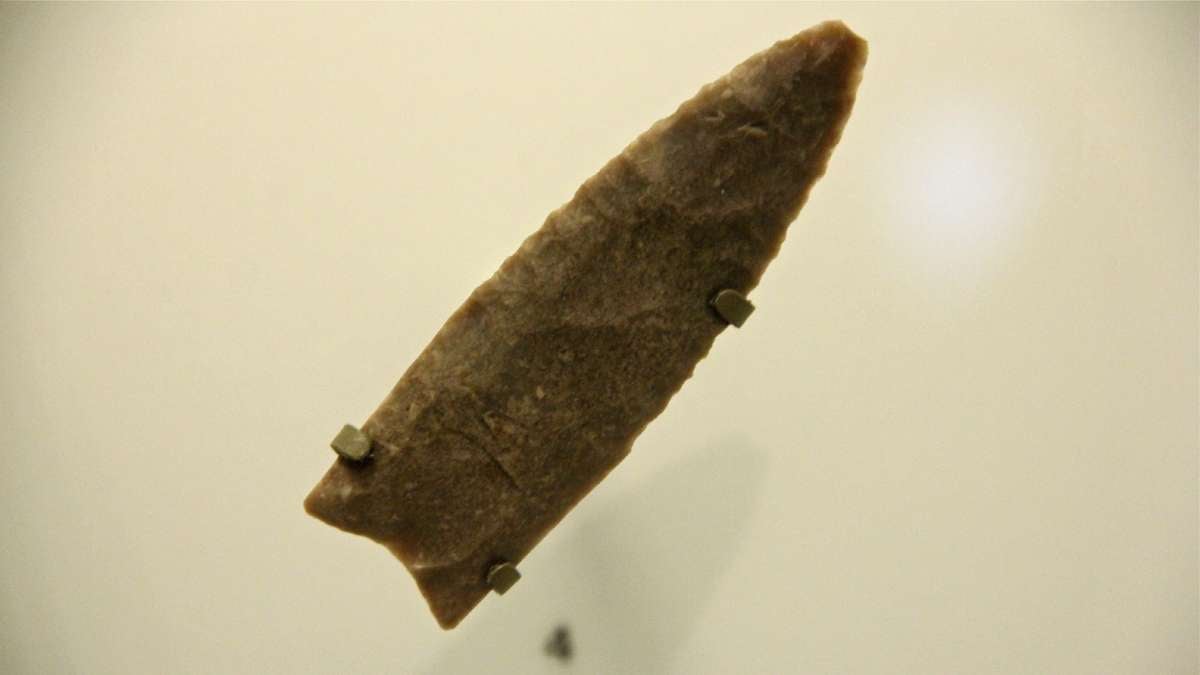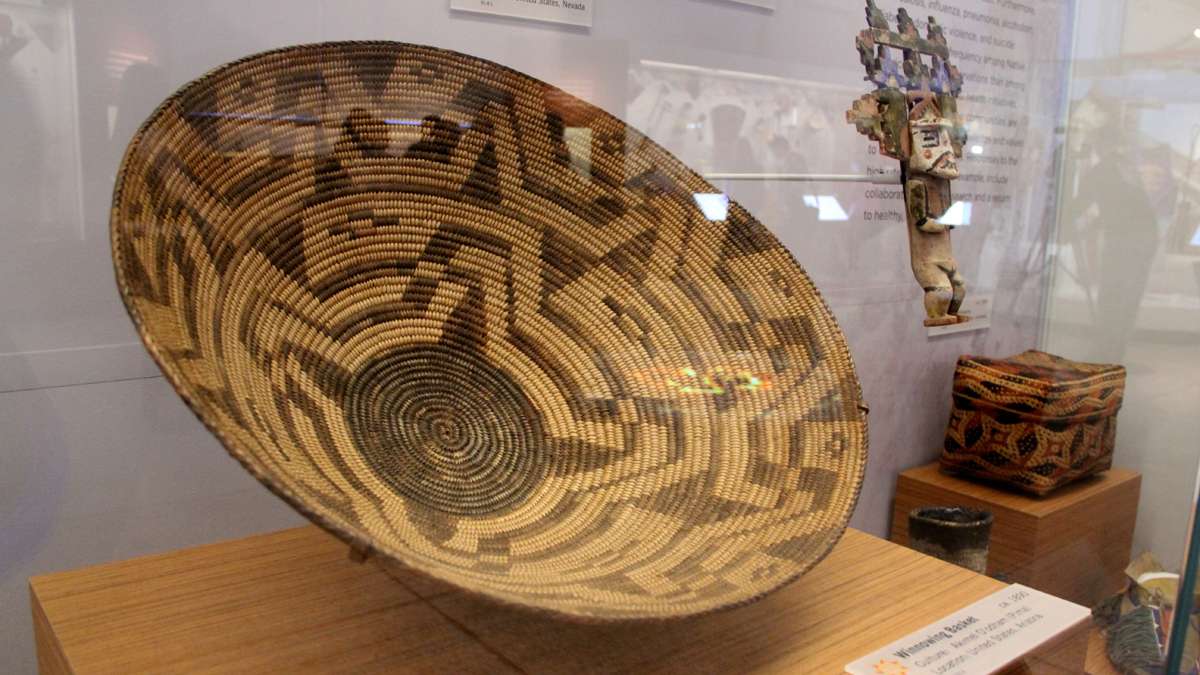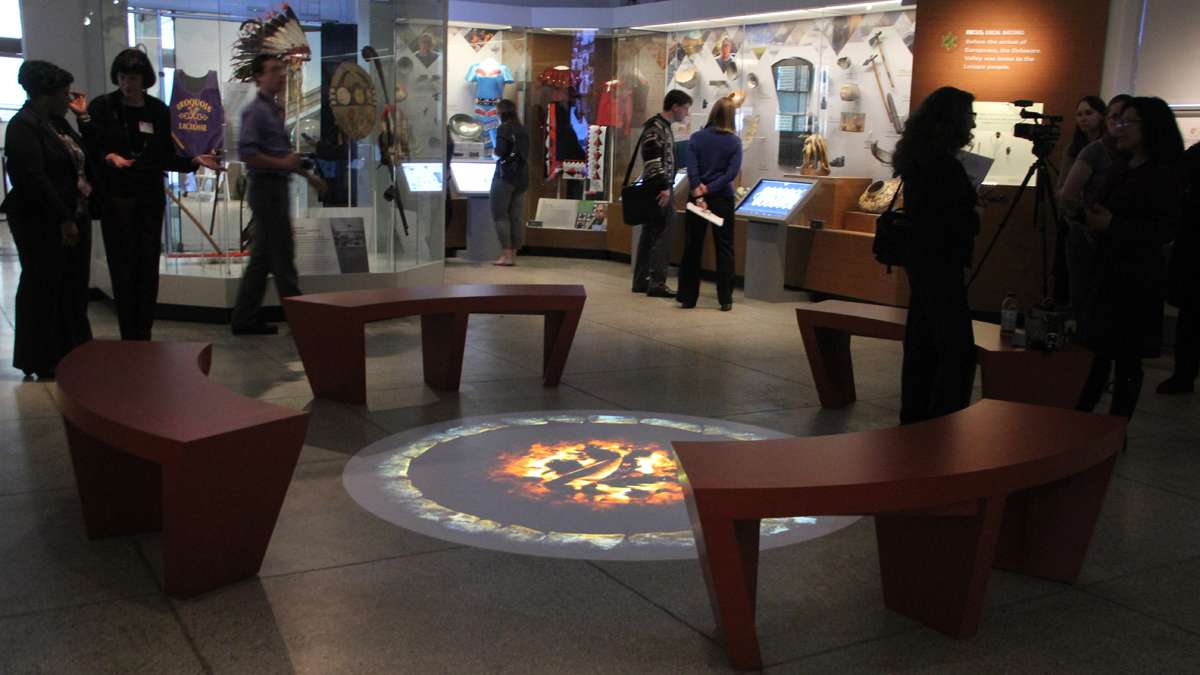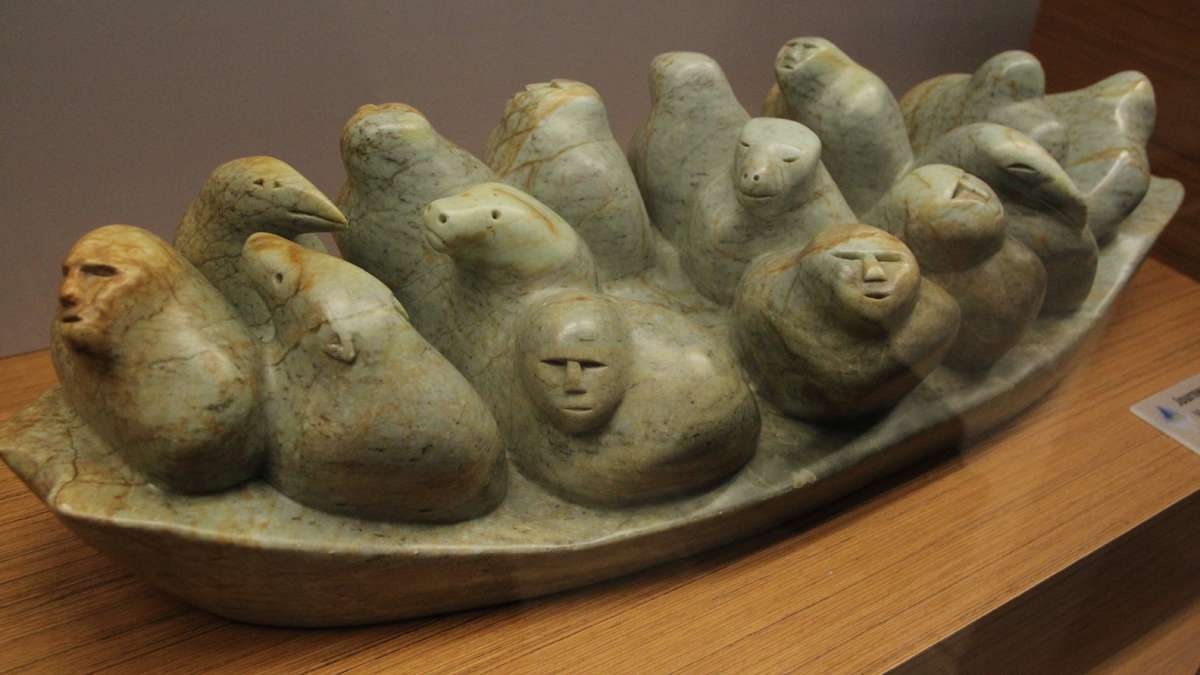Museum of antiquity emphasizes current history of Native Americans [photos]
ListenWhat’s the first thing that comes to your mind when you hear the words Native American? Is it old movies? Tonto? Protests? Drumming? Casinos?
Well, the venerable University of Pennsylvania Museum of Archaeology and Anthropology decided it might be a good time to set some records straight from stereotypes and preconceived ideas about today’s Native Americans. The show is called “Native American Voices: The People, Here and Now.”
Everything in this major exhibition — the ancient and new objects and artifacts, the photos and interactive testimonials, the music, poetry and videos — says one thing: “We are here now!”
“Yes,” says Tina Pierce Fragoso, a tribal member of the Nanticoke Lenni-Lenape in Bridgeton, New Jersey.
“I want people to know that we have maintained our culture. We may not be what people believe a native person should be, but then there are many native nations in these United States,” she said.
Some of those nations, including Pierce Fragoso’s tribal community of about 3,000 members, are still struggling for federal recognition.
One of the consultants for the exhibition, Pierce Fragoso works at the admissions department at the University of Pennsylvania, where she also coordinates Native American recruitment. The biggest challenge in anything that has to do with Native Americans, she said, is moving away from the common misconceptions.
“I certainly got in trouble in first grade when someone said there are no native people on the East Coast. I said, ‘Wait a minute, I’m sitting right here!'” Fragoso recounts in one of the documentaries in the exhibition.
The film explains that it’s not unusual that the area Lenni-Lenape presence was hidden under somewhat arbitrary federal actions. “Without their knowledge, Census takers in the late 1800s listed them as Negro or black removing their Native American identities with the stroke of a pen,” Pierce Fragoso said.
Native American influence is enormous
“One of the difficult challenges of this topic,” said Lucy Fowler Williams, exhibition lead curator, is that Native America is so diverse. “It’s such a huge area, there’s no poster child, there no one leader or even a few leaders.”
But she offers some surprising facts such as that almost 80 percent of Native Americans live in cities, not reservations or native communities.
To tell the stories, Williams surrounded herself with Native American consultants and advisers from around the country who could speak about the common threads of sovereignty, history, culture, ancestral lands and traditions.
But now the challenge is to devise compelling techniques to explore these issues. Williams, who is also the senior keeper of the American Collection at the Penn Museum, wanted to avoid some of the most conventional ways institutions have showcased ancient cultures and their ongoing ties to the present.
“So I did not want to organize the show geographically. I wanted instead to think of native people in new ways,” she said. “I centered the show on celebrations and commemorations, the importance of land and new social, legislative and economic initiatives undertaken by different tribes.”
To do so, the show uses almost circular exhibition spaces surrounding an inner core. A virtual storytelling campfire is framed by interactive towers where hundreds of personal and tribal stories can be accessed through touch screens. The outer circle is for art work old and new, from the ancient artifacts to work created by Native American artists in the past few years.
One of the documentaries is about modern artists and their take on ancestry, identity and everyday life. One segment focuses on Pueblo embroidery artist Shaun Tafoya.
“Pueblo people have always prayed for people around the world, so it was no different when terror struck America,” Tafoya said. Tafoya responded by embroidering a memorial prayer tapestry to honor the victims of 9/11.
Historical ties to Philadelphia
Throughout the exhibition, the myriad connections with American history are re-established and strongly noted including the Native American historic presence in Philadelphia and the region. In fact, the University of Pennsylvania itself is located on ancestral Lenni-Lenape land.
The show, says renowned Cheyenne and Hodulgee Muscogee poet, scholar and activist Suzan Harjo, documents how tribes all over have historical ties to Philadelphia.
“There are native people living today whose ancestors had a direct relationship, a personal relationship with Benjamin Franklin or other founders,” she said. “The reality of a native modern person is not divorced from ancestry. It’s something that we just carry on, and it’s something that gives us a very personal feeling about it.”
Two hundred objects from the museum’s collection will rotate during the life of the show. It took five years to put “Native American Voices: The People, Here and Now” exhibition together. To complete the circle, so to speak, it will remain open for the next five years, enriched by a whole calendar of cultural and social events.
WHYY is your source for fact-based, in-depth journalism and information. As a nonprofit organization, we rely on financial support from readers like you. Please give today.










